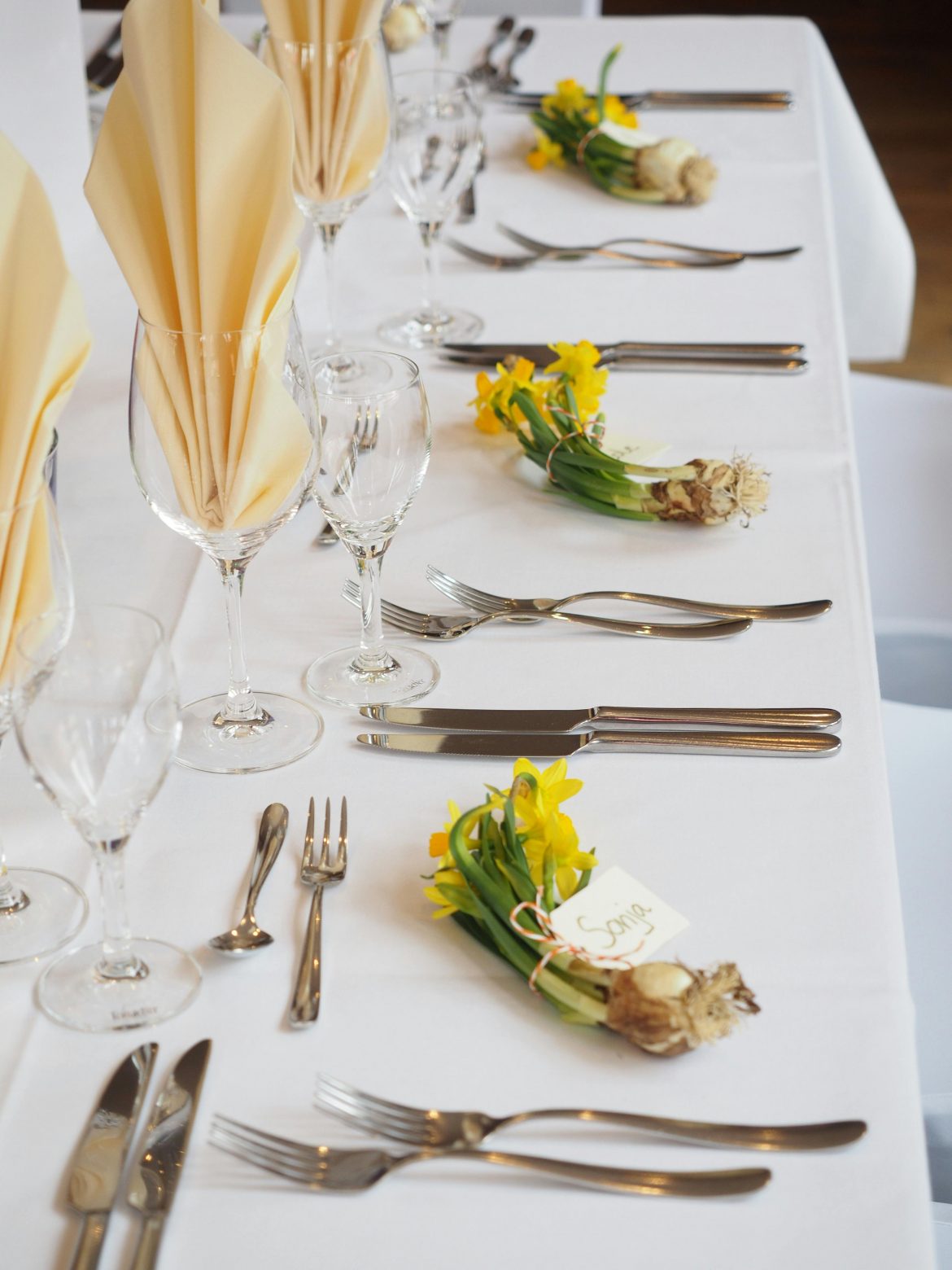“We eat first with our eyes.”—Apicius, 1st-century Roman gourmand.
When it comes to dining, whether you’re setting the table for a date night or a big spread for a corporate event, the focus is commonly on the food, the company, and the ambience. The most important aspect that can make or break the dining experience is actually the table setting! A well-set table can take a meal from drag to fab, positively influencing our mood, behaviour, and even our perception of the food itself.
Join us as we dive into the psychology of a well-set table and explore how colours, textures, and placements affect food.
Set the tone with colours
The colour scheme of your table is what most people see first. They have a profound impact on the mood and atmosphere of the dining experience, before starting the meal. Warm colours, like reds and oranges, stimulate appetite and energy. Cool colours, like blues and purples, promote relaxation and calmness. Neutral colours, like whites and greys, provide balance and freshness.
- Warm colours (reds, oranges, yellows): Stimulate appetite and energy. Lay the table with a warm runner on top of a neutral tablecloth, set warm-toned underplates down, have candles in these tones, or set warm-toned flower arrangements on the table.
- Cool colours (blues, greens, purples): Have a calming effect. Choose blues, greens, and purples to set a more relaxed dining atmosphere. Think luscious green plants and decor, blue tablecloths, or purple glassware.
- Neutral tones (whites, blacks, greys): Create a fresh and balanced dining experience with white tablecloths, grey crockery, or an all-black theme. To avoid looking dull or boring, use bright colours to add pops of colour to keep diners engaged.
- Lighter colour palettes: Encourage a calm yet slightly energetic ambience. This works great for breakfasts and brunches.
- Dark colour palettes: Create an intimate ambience, leading to a cosy and luxurious atmosphere. This works great for intimate dinners or rooms with little or dim lighting.
Create a little drama and depth with texture
The next thing the eye spots, following colours, is texture. It helps to create depth and drama, keeping you engaged. Rough, earthy textures evoke feelings of rustic charm and comfort. Glossy or smooth textures convey luxury and sophistication. And let’s not forget the weight and balance utensils bring to the table. Heavier or more embellished utensils can make food feel more substantial and satisfying, whereas dainty and simple utensils can make food feel more delicate.
- Rough textures: Think earthy-toned flower arrangements, rough-textured tablecloths, and using actual produce as decor on the table.
- Smooth textures: Think glass, metals, and smooth ceramics for decor, cutlery and crokery. Or slightly glossy tablecloths and napkins for that luxurious touch.
Form meets function
The shape of your crockery, cutlery, and tableware placements has a huge impact on the overall dining experience. Round plates and bowls create a sense of unity and wholeness. Angular shapes (squares and rectangles) add a touch of modernity and edginess. Ergonomic utensils create a comforting and relaxed atmosphere, where chunky designs add excitement.
The decor you use also has an impact. Large and tall flower arrangements bring luxury and a formal feel to the dining experience. Candles create an intimate setting. Pairing different textured glasses creates a quirky, bohemian feel that keeps the diner engaged.
Whatever you choose, make sure the table is balanced (use the rule of three with decor), there’s variety in shapes, colours, textures, and heights (so the table doesn’t look flat), and, most importantly, make sure your diners can see each other across the table to promote easy conversation.

